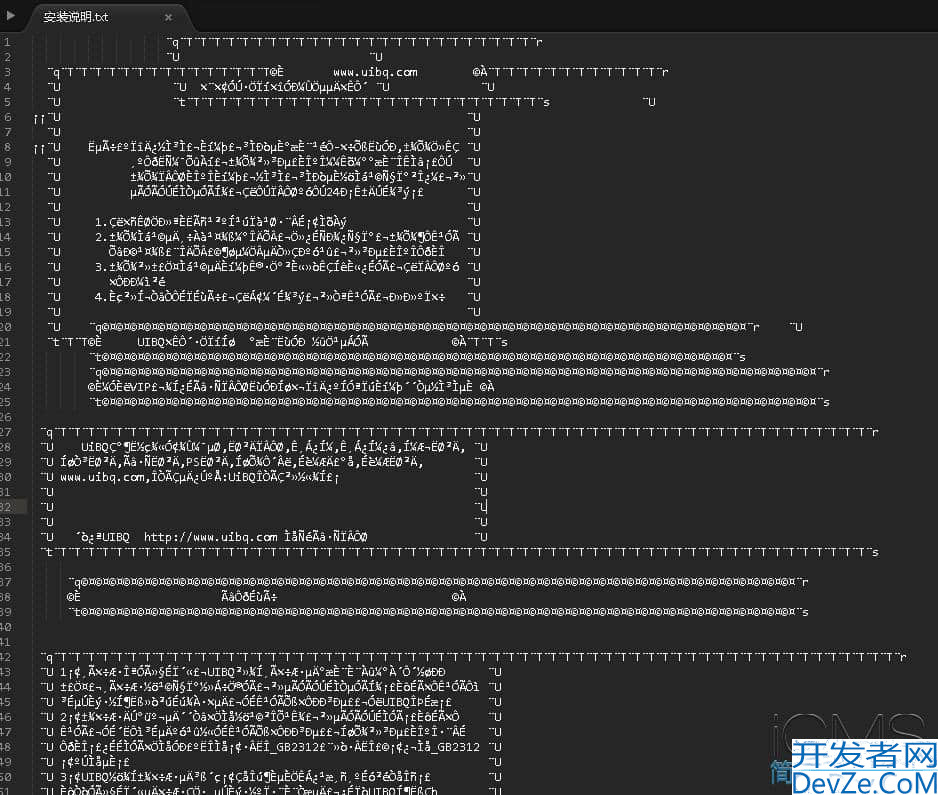Python中文件名编码问题的解决方案深度解析
目录
- 引言
- 一、理解文件名编码问题的根源
- 1.1 不同操作系统的文件名编码差异
- 1.2 编码问题的表现形式
- 二、基础解决方案:使用原始字节接口
- 2.1 使用字节路径处理文件操作
- 2.2 目录遍历中的字节路径使用
- 三、高级编码处理策略
- 3.1 编码检测与转换
- 3.2 处理混合编码目录
- 四、实战应用案例
- 4.1 文件同步工具中的编码处理
- 4.2 文件名编码修复工具
- 五、跨平台兼容性处理
- 六、最佳实践与总结
- 6.1 文件名编码处理最佳实践
- 6.2 性能与可靠性平衡
- 总结
引言
在跨平台文件处理和国际化软件开发中,文件名编码问题是一个常见且棘手的挑战。不同操作系统采用不同的默认文件编码方式:Windows通常使用UTF-16编码但通过ANSI代码页与应用程序交互,linux和MACOS则普遍采用UTF-8编码。这种差异导致在处理包含非ASCII字符(如中文、日文、特殊符号等)的文件名时,经常出现乱码、文件无法找到或操作失败等问题。
python作为一门跨平台编程语言,提供了多种处理文件名编码的技术和策略。从直接操作原始字节到智能编码检测,从错误恢复机制到统一编码转换,掌握这些技术对于开发健壮的跨平台文件处理应用至关重要。特别是在处理用户上传的文件、遍历国际化的目录结构或构建文件管理工具时,正确处理文件名编码问题显得尤为重要。
本文将深入探讨Python中绕过文件名编码问题的各种方法,分析其原理、适用场景和注意事项。我们将从基础的文件名表示方式讲起,逐步深入到高级的编码检测和转换技术,并通过大量实际示例展示如何在不同场景下选择和应用最合适的解决方案。
一、理解文件名编码问题的根源
1.1 不同操作系统的文件名编码差异
import sys
import platform
def analyze_system_encoding():
"""分析当前系统的文件名编码情况"""
print(f"操作系统: {platform.system()} {platform.release()}")
print(f"Python版本: {sys.version}")
print(f"默认文件系统编码: {sys.getfilesystemencoding()}")
print(f"默认字符串编码: {sys.getdefaultencoding()}")
# 检查平台特定信息
if platform.system() == "Windows":
import locale
print(f"Windows ANSI代码页: {locale.getpreferredencoding()}")
elif platform.system() == "Linux":
# 在Linux上检查LANG环境变量
lang = os.environ.get('LANG', '未设置')
print(f"LANG环境变量: {lang}")
# 运行分析
analyze_system_encoding()
1.2 编码问题的表现形式
文件名编码问题通常表现为以下几种形式:
- 乱码显示:文件名显示为无意义的字符序列
- 文件找不到:即使文件确实存在,也无法通过路径访问
- 操作失败:文件操作(复制、重命名、删除等)因编码问题失败
- 兼容性问题:在不同系统间传输文件时出现名称错误
二、基础解决方案:使用原始字节接口
2.1 使用字节路径处理文件操作
Python的许多文件操作函数支持字节路径,这可以绕过字符串编码问题。
import os
import sys
def file_operations_with_bytes(path_bytes):
"""
使用字节路径进行文件操作
"""
try:
# 检查文件是否存在
if os.path.exists(path_bytes):
print("文件存在")
# 获取文件状态
stat_info = os.stat(path_bytes)
print(f"文件大小: {stat_info.st_size} 字节")
# 读取文件内容
with open(path_bytes, 'rb') as f:
content = f.read(100) # 读取前100字节
print(f"文件开头: {content[:20]}...")
return True
else:
print("文件不存在")
return False
except Exception as e:
print(f"文件操作失败: {e}")
return False
# 示例:处理可能包含特殊字符的文件名
def handle_problematic_filename():
# 假设我们有一个可能编码有问题的文件名
original_path = "中文文件.txt" # 可能在某些环境下编码错误
try:
# 尝试转换为字节
if isinstance(original_path, str):
# 使用文件系统编码转换为字节
byte_path = original_path.encode(sys.getfilesystemencoding())
else:
byte_path = original_path
# 使用字节路径进行操作
success = file_operations_with_bytes(byte_path)
return success
except UnicodeEncodeError as e:
print(f"编码失败: {e}")
return False
# 使用示例
handle_problematic_filename()
2.2 目录遍历中的字节路径使用
import os
import sys
def list_directory_bytes(directory_path):
"""
使用字节路径列出目录内容
"""
try:
# 确保路径是字节格式
if isinstance(directory_path, str):
directory_bytes = directory_path.encode(sys.getfilesystemencoding())
else:
directory_bytes = directory_path
# 使用os.listdir的字节版本
with os.scandir(directory_bytes) as entries:
for entry in entries:
# entry.name 在Python 3.5+中是字符串,但我们可以获取原始字节信息
print(f"条目: {entry.name}")
# 对于需要原始字节的场景,可以这样处理
try:
# 尝试以字符串方式处理
if entry.is_file():
print(f" 类型: 文件")
elif entry.is_dir():
print(f" 类型: 目录")
except UnicodeError:
# 如果字符串处理失败,使用字节方式
print(f" 类型: 未知(编码问题)")
# 这里可以使用entry.path获取字节路径进行进一步操作
except FileNotFoundError:
print("目录不存在")
except PermissionError:
print("没有访问权限")
except Exception as e:
print(f"列出目录时出错: {e}")
# 使用示例
list_directory_bytes("/path/to/directory")
三、高级编码处理策略
3.1 编码检测与转换
import chardet
from pathlib import Path
class SmartFilenameDecoder:
"""
智能文件名解码器
"""
def __init__(self):
self.common_encodings = ['utf-8', 'gbk', 'gb2312', 'shift_jis',
'iso-8859-1', 'windows-1252']
def detect_filename_encoding(self, byte_sequence):
"""
检测字节序列的编码
"""
# 首先尝试常见编码
for encoding in self.common_encodings:
try:
decoded = byte_sequence.decode(encoding)
# 简单的有效性检查:是否包含可打印字符
if any(c.isprintable() or c.isspace() for c in decoded):
return encoding, decoded
except UnicodeDecodeError:
continue
# 使用chardet进行智能检测
try:
result = chardet.detect(byte_sequence)
if result['confidence'] > 0.7: # 置信度阈值
www.devze.comencoding = result['encoding']
decoded = byte_sequence.decode(encoding)
return encoding, decoded
except:
pass
# 最后尝试:使用替换错误处理
try:
decoded = byte_sequence.decode('utf-8', errors='replace')
return 'utf-8-with-replace', decoded
except:
return None, None
def safe_path_conversion(self, raw_path):
"""
安全路径转换
"""
if isinstance(raw_path, bytes):
encoding, decoded = self.detect_filename_encoding(raw_path)
if decoded:
return decoded
else:
# 无法解码,返回可读的字节表示
return f"byte_{raw_path.hex()[:16]}..."
else:
return raw_path
# 使用示例
decoder = SmartFilenameDecoder()
# 测试各种编码
test_bytes = [
"中文文件.txt".encode('gbk'),
"日本語ファイル.txt".encode('shift_jis'),
"file with spcial chars.txt".encode('utf-8'),
b'\xff\xfe\x00\x00' # 无效字节序列
]
for i, byte_data in enumerate(test_bytes):
encoding, decoded = decoder.detect_filename_encoding(byte_data)
print(f"测试 {i+1}: 编码={encoding}, 解码结果={decoded}")
3.2 处理混合编码目录
import os
from pathlib import Path
class MixedEncodingHandler:
"""
处理混合编码目录的工具类
"""
def __init__(self):
self.decoder = SmartFilenameDecoder()
def walk_mixed_encoding(self, root_dir):
"""
遍历可能包含混合编码的目录
"""
root_path = Path(root_dir)
try:
with os.scandir(root_dir) as entries:
for entry in entries:
try:
# 尝试正常处理
entry_name = entry.name
entry_path = entry.path
if entry.is_file():
print(f"文件: {entry_name}")
elif entry.is_dir():
print(f"目录: {entry_name}/")
# 递归遍历子目录
self.walk_mixed_encoding(entry_path)
except UnicodeError:
# 遇到编码问题,使用字节方式处理
print("遇到编码问题,使用字节方式处理...")
self._handle_encoding_problem(entry)
except Exception as e:
print(f"遍历目录时出错: {e}")
def _handle_encoding_problem(self, entry):
"""
处理编码有问题的目录条目
"""
try:
# 获取原始字节信息(通过路径)
byte_path = getattr(entry, '_name_bytes', None)
if byte_path is None:
# 对于某些系统,可能需要其他方式获取字节名称
byte_path = entry.path.encode('latin-1', errors='replace')
# 尝试解码
decoded_name = self.decoder.safe_path_conversion(byte_path)
# 获取文件类型
try:
if entry.is_file():
file_type = "文件"
elif entry.is_dir():
file_type = "目录"
else:
file_type = "其他"
except:
file_type = "未知"
print(f"{file_type} (编码问题): {decoded_na编程me}")
except Exception as e:
编程客栈 print(f"处理编码问题时出错: {e}")
# 使用示例
handler = MixedEncodingHandler()
handler.walk_mixed_encoding("/path/to/problematic/directory")
四、实战应用案例
4.1 文件同步工具中的编码处理
import os
import shutil
from pathlib import Path
class EncodingAwareFileSync:
"""
支持编码处理的文件同步工具
"""
def __init__(self, source_dir, target_dir):
self.source_dir = Path(source_dir)
self.target_dir = Path(target_dir)
self.decoder = SmartFilenameDecoder()
def sync_files(self):
"""
同步文件,处理编码问题
"""
if not self.source_dir.exists():
print("源目录不存在")
return False
# 确保目标目录存在
self.target_dir.mkdir(parents=True, exist_ok=True)
# 遍历源目录
for root, dirs, files in os.walk(self.source_dir):
# 处理相对路径
rel_path = Path(root).relative_to(self.source_dir)
# 创建对应的目标目录
target_root = self.target_dir / rel_path
target_root.mkdir(exist_ok=True)
# 处理文件
for file in files:
source_file = Path(root) / file
target_file = target_root / file
self._sync_single_file(source_file, target_file)
return True
def _sync_single_file(self, source_file, target_file):
"""
同步单个文件
"""
try:
# 正常情况下的同步
if not target_file.exists() or \
source_file.stat().st_mtime > target_file.stat().st_mtime:
shutil.copy2(source_file, target_file)
print(f"同步: {source_file} -> {target_file}")
except UnicodeError:
# 处理编码问题
self._handle_encoding_sync(source_file, target_file)
except Exception as e:
print(f"同步文件时出错: {source_file} - {e}")
def _handle_encoding_sync(self, source_file, target_file):
"""
处理编码有问题的文件同步
"""
try:
# 获取字节路径
source_bytes = str(source_file).encode('latin-1', errors='replace')
target_bytes = str(target_file).encode('latin-1', errors='replace')
# 使用字节路径操作
with open(source_bytes, 'rb') as src:
content = src.read()
with open(target_bytes, 'wb') as dst:
dst.write(content)
# 复制元数据
stat = os.stat(source_bytes)
os.utime(target_bytes, (stat.st_atime, stat.st_mtime))
decoded_name = self.decoder.safe_path_conversion(source_bytes)
print(f"同步(编码处理): {decoded_name}")
except Exception as e:
print(f"处理编码同步时出错: {e}")
# 使用示例
sync_tool = EncodingAwareFileSync("/source/directory", "/target/directory")
sync_tool.sync_files()
4.2 文件名编码修复工具
import os
import re
from pathlib import Path
class FilenameEncodingFixer:
"""
文件名编码修复工具
"""
def __init__(self):
self.decoder = SmartFilenameDecoder()
self.encoding_stats = {}
def fix_directory_encodings(self, directory_path, dry_run=True):
"""
修复目录中的文件名编码问题
"""
dir_path = Path(directory_path)
if not dir_path.exists() or not dir_path.is_dir():
print("目录不存在或不是目录")
return False
fixed_count = 0
problem_count = 0
# 遍历目录
for item in dir_path.iterdir():
original_name = item.name
original_path = item
try:
# 测试文件名是否可正常处理
test = str(original_name)
# 如果正常,跳过
if self._is_valid_filename(original_name):
continue
except UnicodeError:
# 发现编码问题
problem_count += 1
if not dry_run:
# 尝试修复
success = self._fix_single_filename(original_path)
if success:
fixed_count += 1
else:
print(f"发现编码问题: {original_name}")
print(f"发现 {problem_count} 个编码问题,修复 {fixed_count} 个")
return True
def _is_valid_filename(self, filename):
"""
检查文件名是否有效
"""
try:
# 尝试编码和解码
encoded = filename.encode('utf-8')
decoded = encoded.decode('utf-8')
# 检查是否包含非法字符(根据操作系统)
if os.name == 'nt': # Windows
invalid_chars = r'[<>:"/\\|?*]'
else: # Unix/Linux
invalid_chars = r'[/]'
if re.search(invalid_chars, filename):
return False
return True
except UnicodeError:
return False
def _fix_single_filename(self, file_path):
"""
修复单个文件名
"""
try:
# 获取原始字节名称
original_bytes = str(file_path).encode('latin-1', errors='replace')
# 尝试检测正确编码
encoding, decoded_name = self.decoder.detect_filename_encoding(original_bytes)
if not decoded_name:
print(f"无法修复: {file_path}")
return False
# 生成新路径
parent_dir = file_path.parent
new_path = parent_dir / decoded_name
# 避免名称冲突
counter = 1
while new_path.exists():
stem = file_path.stem
suffix = file_path.suffix
new_name = f"{stem}_{counter}{suffix}"
new_path = parent_dir / new_name
counter += 1
# 重命名文件
file_path.rename(new_path)
print(f"修复: {file_path.name} -> {new_path.name}")
return True
except Exception as e:
print(f"修复文件名时出错: {file_path} - {e}")
return False
# 使用示例
fixer = FilenameEncodingFixer()
# 先进行干运行(不实际修改)
fixer.fix_directory_encodings("/path/to/fix", dry_run=True)
# 实际修复
fixer.fix_directory_encodings("/path/to/fix", dry_run=False)
五、跨平台兼容性处理
统一文件名处理框架
import os
import sys
from pathlib import Path
class CrossPlatformFilenameHandler:
"""
跨平台文件名处理框架
""编程客栈"
def __init__(self):
self.system_encoding = sys.getfilesystemencoding()
self.is_windows = os.name == 'nt'
def normalize_filename(self, filename):
"""
规范化文件名,确保跨平台兼容
"""
if isinstance(filename, bytes):
# 字节文件名,需要解码
try:
decoded = filename.decode(self.system_encoding)
return self._sanitize_filename(decoded)
except UnicodeDecodeError:
# 解码失败,使用安全转换
return self._safe_byte_conversion(filename)
else:
# 字符串文件名,进行清理
return self._sanitize_filename(filename)
def _sanitize_filename(self, filename):
"""
清理文件名,移除非法字符
"""
# 定义非法字符(根据操作系统)
if self.is_windowsandroid:
invalid_chars = r'[<>:"/\\|?*]'
max_length = 255 # Windows文件名长度限制
else:
invalid_chars = r'[/]'
max_length = 255 # 一般Unix限制
# 移除非法字符
import re
sanitized = re.sub(invalid_chars, '_', filename)
# 处理保留名称(Windows)
if self.is_windows:
reserved_names = {'CON', 'PRN', 'AUX', 'NUL',
'COM1', 'COM2', 'COM3', 'COM4', 'COM5',
'COM6', 'COM7', 'COM8', 'COM9',
'LPT1', 'LPT2', 'LPT3', 'LPT4', 'LPT5',
'LPT6', 'LPT7', 'LPT8', 'LPT9'}
if sanitized.upper() in reserved_names:
sanitized = f"_{sanitized}"
# 截断过长文件名
if len(sanitized) > max_length:
stem = Path(sanitized).stem
suffix = Path(sanitized).suffix
# 保留后缀,截断主干
if len(suffix) < max_length:
stem_max = max_length - len(suffix)
sanitized = stem[:stem_max] + suffix
else:
sanitized = sanitized[:max_length]
return sanitized
def _safe_byte_conversion(self, byte_filename):
"""
安全转换字节文件名
"""
try:
# 尝试常见编码
for encoding in ['utf-8', 'gbk', 'iso-8859-1']:
try:
decoded = byte_filename.decode(encoding)
return self._sanitize_filename(decoded)
except UnicodeDecodeError:
continue
# 所有编码都失败,使用十六进制表示
hex_str = byte_filename.hex()[:16]
return f"unknown_{hex_str}"
except Exception:
return "invalid_filename"
def create_cross_platform_path(self, *path_parts):
"""
创建跨平台兼容的路径
"""
normalized_parts = []
for part in path_parts:
if isinstance(part, Path):
part = str(part)
normalized = self.normalize_filename(part)
normalized_parts.append(normalized)
# 使用pathlib构建路径
path = Path(normalized_parts[0])
for part in normalized_parts[1:]:
path = path / part
return path
# 使用示例
filename_handler = CrossPlatformFilenameHandler()
# 测试各种文件名
test_names = [
"正常文件.txt",
"file with spaces.doc",
"包含/非法/字符.txt", # Unix非法
"包含:非法字符.txt", # Windows非法
b'\xff\xfeinvalid bytes'.hex() # 无效字节
]
for name in test_names:
normalized = filename_handler.normalize_filename(name)
print(f"原始: {name} -> 规范化: {normalized}")
六、最佳实践与总结
6.1 文件名编码处理最佳实践
- 始终明确编码:在文件操作中明确指定编码方式,避免依赖系统默认设置
- 使用字节接口:对于可能包含编码问题的文件,使用字节路径进行操作
- 实施防御性编程:假设所有文件名都可能包含编码问题,添加适当的错误处理
- 统一编码策略:在项目中统一使用UTF-8编码处理文件名
- 记录编码信息:在处理文件时记录使用的编码方式,便于后续调试
6.2 性能与可靠性平衡
import time
from functools import wraps
def timing_decorator(func):
"""执行时间测量装饰器"""
@wraps(func)
def wrapper(*args, **kwargs):
start_time = time.time()
result = func(*args, **kwargs)
end_time = time.time()
print(f"{func.__name__} 执行时间: {end_time - start_time:.4f}秒")
return result
return wrapper
class OptimizedEncodingHandler(CrossPlatformFilenameHandler):
"""
优化的编码处理器,平衡性能与可靠性
"""
def __init__(self):
super().__init__()
self.encoding_cache = {} # 编码检测缓存
@timing_decorator
def BATch_process_files(self, file_list):
"""
批量处理文件列表
"""
results = []
for file_path in file_list:
try:
# 使用缓存优化重复文件的处理
if file_path in self.encoding_cache:
result = self.encoding_cache[file_path]
else:
result = self.normalize_filename(file_path)
self.encoding_cache[file_path] = result
results.append(result)
except Exception as e:
results.append(f"error:{e}")
return results
# 使用示例
optimized_handler = OptimizedEncodingHandler()
# 生成测试文件列表
test_files = ["测试文件.txt"] * 1000 + ["another_file.pdf"] * 500
# 批量处理
results = optimized_handler.batch_process_files(test_files)
print(f"处理 {len(results)} 个文件")
总结
文件名编码问题是Python跨平台文件处理中的一个复杂但重要的话题。通过本文的探讨,我们了解了问题的根源、各种解决方案以及实际应用技巧。
关键要点总结:
1.问题根源:不同操作系统使用不同的文件编码方式是问题的根本原因
2.解决方案:
- 使用字节接口绕过字符串编码问题
- 实施智能编码检测和转换
- 采用统一的文件名规范化策略
3.性能考量:通过缓存和批量处理优化编码检测性能
4.错误处理:健全的错误处理机制是生产环境应用的必备条件
5.跨平台兼容:考虑不同操作系统的文件名限制和特殊规则
最佳实践建议:
- 在生产代码中始终处理可能的编码异常
- 对于国际化的应用,统一使用UTF-8编码
- 实施文件名规范化,确保跨平台兼容性
- 使用pathlib等现代库进行文件路径操作
- 在性能敏感的场景中使用缓存和批量处理
通过掌握这些技术和最佳实践,开发者可以构建出健壮、可靠且跨平台兼容的文件处理应用程序,能够妥善处理各种文件名编码问题,为用户提供更好的体验。
以上就是Python中文件名编码问题的解决方案深度解析的详细内容,更多关于Python文件名编码问题的资料请关注编程客栈(www.devze.com)其它相关文章!






 加载中,请稍侯......
加载中,请稍侯......
精彩评论